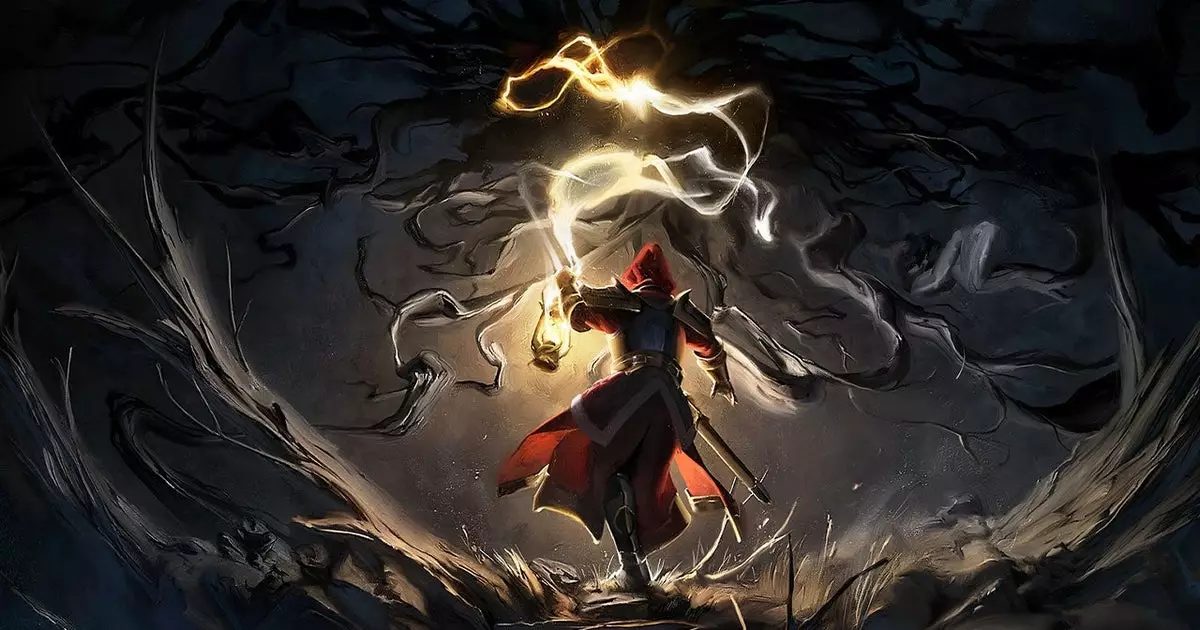From the moment the concept of Mandragora: Whispers of the Witch Tree made its way into my gaming consciousness, apprehension lingered in the air. Initially, it appeared to embody the very archetype of a run-of-the-mill dark fantasy side-scroller—a genre saturated with tepid reboots that play it safe rather than innovate. With visuals reminiscent of cherished titles like Castlevania, Mandragora seemed to tread familiar ground, and its promises of RPG classes and intricate skill trees did little to quell my skepticism. Yet, the involvement of Brian Mitsoda, the mind behind the compelling narrative of Vampire: The Masquerade – Bloodlines, drew me in like a moth to a flame.
However, as the early comments poured in from those who had managed to experience the demo, excitement bubbled beneath the surface. It was evident that the game had sparked the interest of players who found themselves captivated for hours. With the full release finally upon us, I dove headfirst into the world crafted by the developers, and what I discovered surpassed my initial expectations.
The Story as a Guiding Force
One of the most striking aspects of Mandragora is how it uniquely integrates narrative depth into a genre often dominated by mindless combat and mechanical fulmination. Set against the backdrop of an apocalyptic landscape ruled by the sinister King Priest, the story immerses players in the harrowing world of the Crimson City. This character, reminiscent of Judge Claude Frollo, populations the game with an oppressive atmosphere characterized by his chilling obsession with witch hunts and brutal tortures. Rather than simply serving as window dressing, the narrative acts as a driving force that shapes each player’s journey.
Your character, an inquisitor embroiled in moral dilemmas, is thrust into a tale of intrigue after an act of mercy towards a tortured witch imbues you with mysterious power. Suddenly, you are seen as one of the divine, tasked with a mission that unfolds in perilous woods and shadowy settings where danger lurks behind every corner. What sets Mandragora apart is its willingness to explore the psychological landscape of its characters, enriched by a storyline that blends apocalyptic themes with personal growth.
Dynamic Gameplay Mechanics
While the storytelling is a standout element, the mechanics within Mandragora should not be overlooked. Its blend of classic side-scrolling combat with RPG elements strikes a refreshingly modern note. Each engagement requires players to juggle stamina management and evasion tactics, deftly dodging attacks while executing fluid combos. Contrary to my expectations of a “done-it-before” combat system, Mandragora’s dynamics feel invigorating.
The action-RPG delivers players a primary weapon alongside auxiliary options that encourage experimentation, from spell-casting to shield usage. Add to this the variety of gear slots and unique abilities tailored to fit an individual playstyle, and it becomes apparent why players have been dancing with joy over the gameplay experience. However, it is the level design that truly epitomizes the title’s Yorke-est charm. The exquisitely intricate levels are peppered with Dark Souls-inspired altars and hidden areas, captivating players as they navigate their environments and uncover secrets at every turn.
Artistic Vision and Characterization
Visually, Mandragora opts for an artistic direction that might not resonate with everyone. The character portraits exhibit a twitchy, animated quality that some players may find off-putting. Yet, in an unexpected twist, it is precisely this eccentricity that appeals to me. The visuals meld a surrealistic style with a hauntingly beautiful aesthetic, reinforcing the game’s gothic themes.
Moreover, the developers have recognized the power of small character moments to build a larger narrative. An instance early in the game, where an NPC laments a sudden confrontation with an inquisitor only to beg for forgiveness once they realize your status, encapsulates this notion perfectly. Such moments breathe life into the game world, creating a tapestry of interactions that extends beyond mere lore.
Thus, as I explore the expanse of Markingora—anticipating the hidden depths and character arcs—it becomes clear that it offers players a journey as unapologetically rich in narrative as it is in gameplay. The whispers of the Witch Tree call to me, promising a labyrinth of experiences that transcend mere entertainment.

